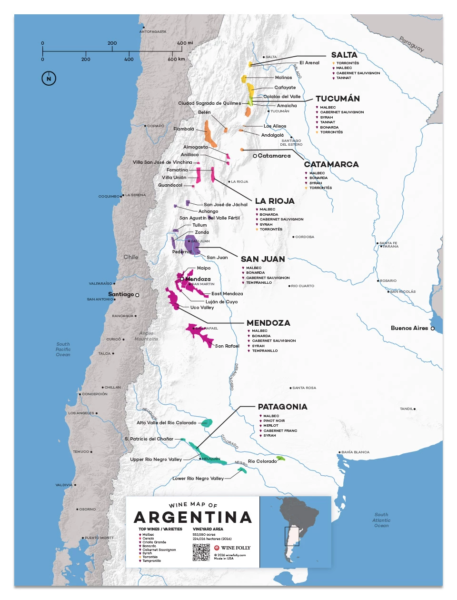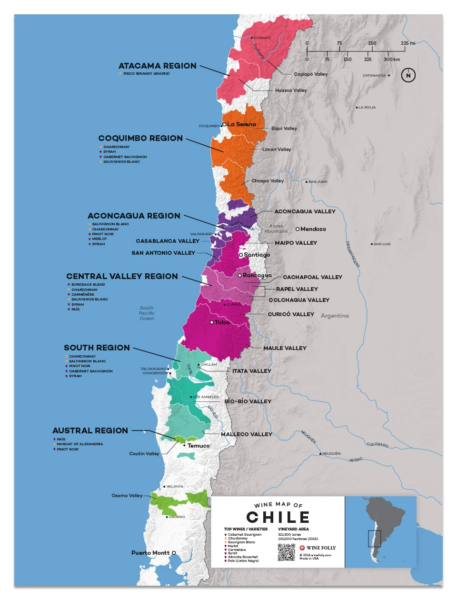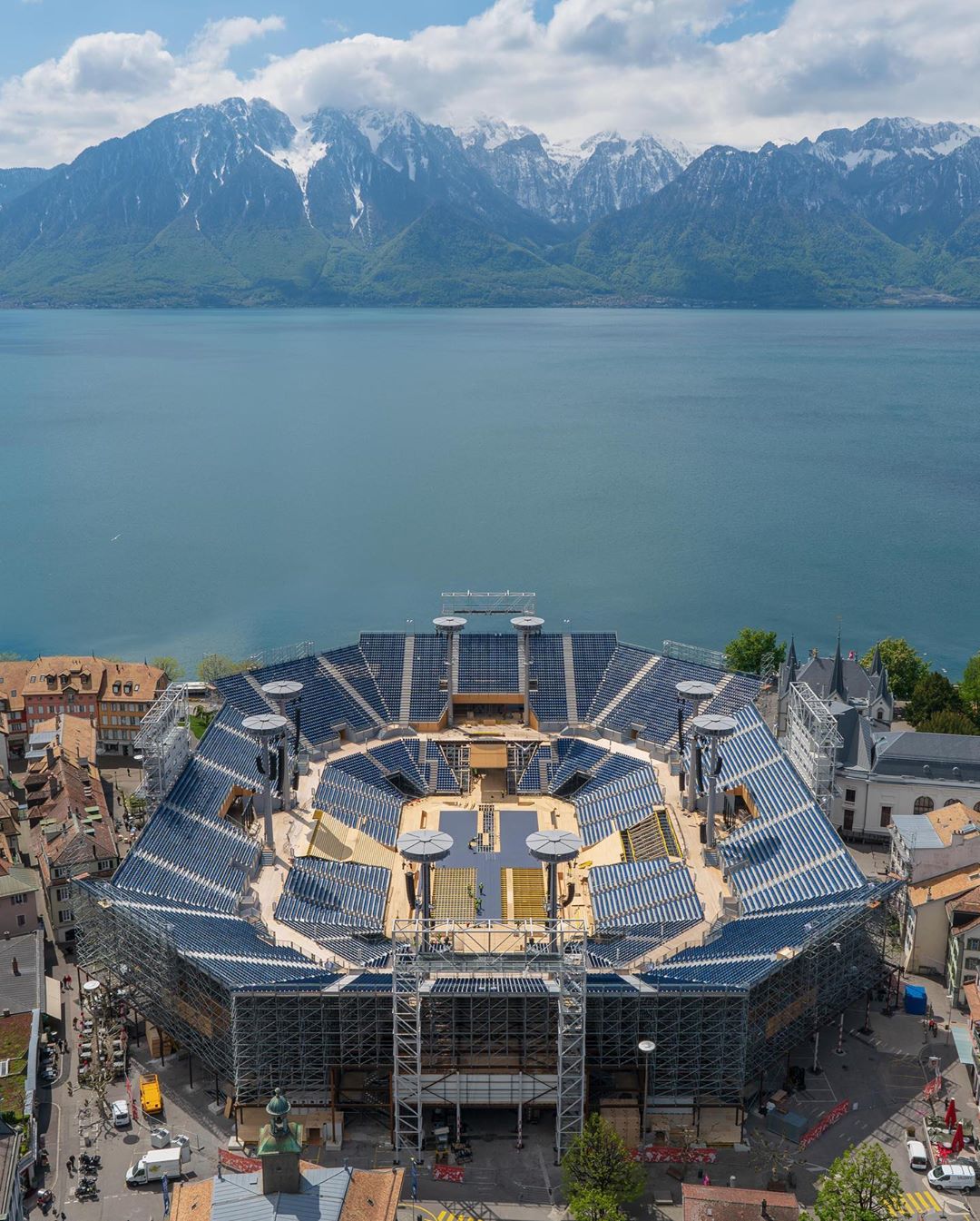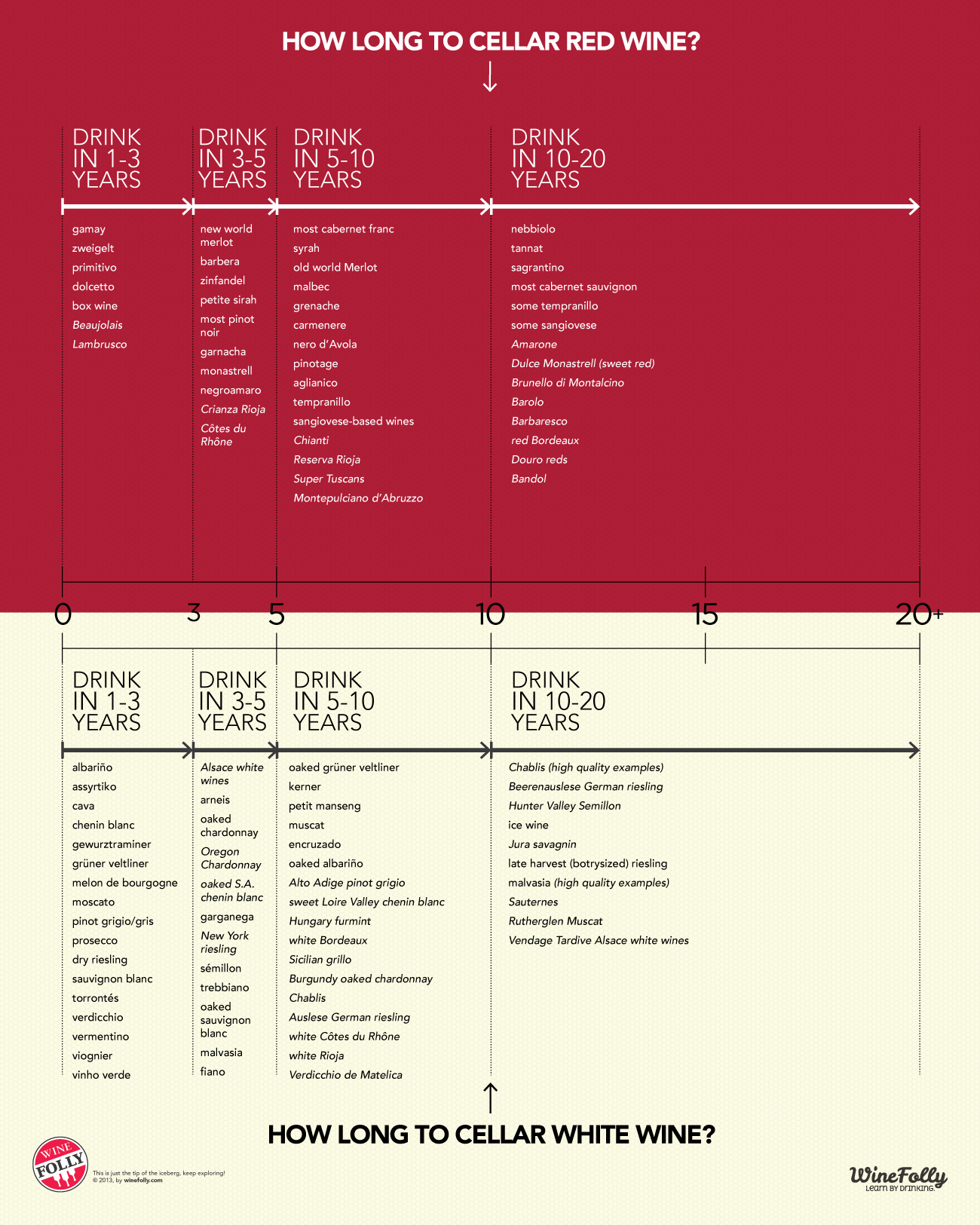
Malbec
Before Argentina took on Malbec, it was just a minor grape in South-West France. Today, Malbec makes up three quarters of Argentina’s vineyards and is spread throughout the world. Malbec struggles to maintain acidity in lower elevations but does fabulously in higher elevation spots where there is a large diurnal temperature shift (cold nights and sunny days). Single-varietal Malbec wines are tasty, but be sure to try a Malbec blend with Cabernet Sauvignon. Malbec is a blending grape in Red Bordeaux Blends.
Mendoza
Maipú
The province’s most historic wine region is just south of Mendoza city. Malbec wines from Maipú offer red fruit (red currant, pomegranate, boysenberry, red plum, and cherry) flavors with a touch of earthy cedar or tobacco.
Some producers to know:
Bodega Lopez
Trapiche wineries
An area called Barrancas, which is slightly warmer than the surrounding Maipú, is noted for producing wines with darker fruit flavors and softer acidity, which is true of its Malbec, Cabernet Sauvignon, and meaty Syrah.
Luján de Cuyo
You may pay a premium for high-end wines from Luján de Cuyo, but these wineries also excel at offering value-driven second label wines. Malbec from Cuyo will offer more black fruits (blackberry, boysenberry, plum sauce, black cherry) with Asian spice notes and a dusty or graphite-like finish.
Some producers to know:
Catena Zapata
Achaval-Ferrer
Bodegas Norton
Viña Cobos
Bodega Vistalba
Durigutti
Uco Valley
With some of the highest elevation vineyards of all of Mendoza, the Uco Valley (or Valle de Uco) is known for producing wines with elegance and excellent aging potential. Wines from this region offer dense, layered black fruit (black plum, raspberry, blackberry, and olive) with savory notes of red pepper flakes and a dusty, cocoa powder-like finish.
Some producers to know:
Clos de la Siete
O. Fournier
Domaine Bousquet
Bodega Lurton
Altos Los Hormigas
Sometimes wines from Uco Valley will be labeled after the nearest town, including Tupungato, Vista Flores, Tunuyán, Campos de los Andes, Los Sauces, San Carlos, La Consulta, and Villa Seca. Malbec, Pinot Noir, Merlot, Sémillon, and Chardonnay are the primary varieties in the valley.
Wine Regions Beyond Mendoza
Argentina’s diverse countryside lend themselves ever-so-well to the grapevine. To the northwest, in the provinces of Salta and Catamarca, winemakers are experimenting with Torrontés and Cabernet Sauvignon at some of the highest altitude vineyards in the world (some upwards of 2597m above sea level). Others are exploring the wind-swept Patagonia regions of Neuquén and Río Negro where Pinot Noir and Merlot thrive.

As a new world wine region, with 2,700 miles of coastline along the frigid Pacific Ocean, Chile produces wines that are both fruit-forward factor and herbaceous. It’s no wonder then, that French wine producers from Bordeaux have invested heavily in the region.
Chile can essentially be split up into 3 major zones: North, Central, and South. The North and South are the frontier regions, where some of the most innovative winemaking is happening. The Central area is the most classic wine-growing area, with hundreds of years of winemaking history and is also home to Chile’s largest producers – this is where you’ll find the valleys of Aconcagua, Maipo, Colchagua and Cachapoal Valleys.
2009, 2011, 2013 and 2014 all produced excellent quality reds.
Cabernet Sauvignon
Cabernet Sauvignon is the most widely-planted grape variety in Chile. Chilean Cabernet Sauvignon typically produces a lighter colored, less tannic style of Cabernet Sauvignon, with juicy flavors of black cherry, plums, smoked bell pepper, and (on some more refined examples) mint and pencil lead.
The Maipo Valley is well known among experts for its bolder styles of Cabernet, outfitted with darker notes of blackberry and cocoa powder. For a more elegant, Bordeaux-styled Cabernet, Colchagua and the Rapel Valley offer wines with black fruit and pencil-lead-like minerality.
Carménère
At first, Carménère was thought to be Merlot when it was first transplanted into Chile. Thankfully, this little mistake is likely what saved Carménère from extinction. Carménère has a similar profile to a light-bodied, juicy style of Merlot with plum and black cherry fruit along with mild tannin. What makes it different than Merlot is Carménère’s high prevalence of an aroma compound called Pyrazine which gives wine more savory flavors of black pepper, bell pepper, and cocoa powder. This is an absolutely fabulous food wine and one of Chile’s treasured grapes.
The finer examples of Carménère have been found in tiny areas within the larger Rapel Valley area including Peumo in Cachapoal and Apalta in Colchagua. Keep your eyes open for these sub-appellations.
Syrah
Syrah is an important grape in Chile and is only just starting to make waves in the wine community. These wines are distinctly more elegant (cool climate) in style and consistently offer up spiced meaty notes along with red or black plummy fruit. Tannins can be bolder in Chilean Syrah, which is one of the reasons this wine has become so intriguing as of late; it also has the potential to age very well.
Within the Central Valley, the region of Rapel Valley (which includes both Cachapoal and Colchagua Valleys) has consistently shown some of the finest examples of Syrah from Chile. Beyond this, you’ll find Syrah also grows alongside Chardonnay and produces several lush and plump examples from Casablanca and Leyda Valleys (in Aconcagua). Some of the best values are found in the extreme wine growing regions including Elqui, Limarí, and the Choapa Valley (in Coquimbo).
Aconcagua
The Aconcagua wine region stretches from the coast inland, and the area for Bordeaux varieties is located around the cities of Llay Lay, San Felipe, and Los Andes. It is one of the sunniest and driest regions for the production of Cabernet Sauvignon, Merlot, and Carménère in Chile. For this reason, the best vineyard sites are usually situated on slopes and terraces which use elevation to increase the temperature modulation between night and day. The vineyards here produce some of the most intensely structured (tannic) red wines, with higher levels of acidity due to the cool nightly temperatures. You’ll find that the Bordeaux-style blends from this region typically exhibit subtle notes of dried berries and intense minerality, along with a milieu of spices that include red pepper, paprika, and black tea.
Some producers to know:
Viña Errazuriz
Viña von Siebenthal
Viña San Esteban
Maipo
The region of Maipo follows the Maipo river valley to the south of Santiago out to the Pacific Ocean. The valley receives cooling winds from the ocean and has a much more Mediterranean climate. The sweet spot in this transverse valley for Bordeaux varieties is found around the towns of Pirque and Puente Alto at the base of the Andes. This area, called Alto Maipo, is famed for its full-bodied red blends, which are reminiscent of the Cabernet Sauvignon from Napa Valley, exhibiting notes of black currant, black cherry, fig paste, and baking spices.
Some producers to know:
Concha y Toro’s “Don Melchor” vineyard (largest producer in Chile and largest vineyard owner in the world)
Viña Almaviva
Viñedo Chadwick
Montgras
Viña Carmen (produced the first single varietal Carménère)
Cachapoal
The more Northern of the two transverse valleys, Cachapoal is known to produce wines with more elegance and minerality. The sub-region, Alto Cachapoal, is at the foot of the Andes and is known for it’s wines with more tart cherry flavors and a distinct gamey/savory nose. The Bordeaux style blends and Carménère from this area offer tart fruit notes along with moderate tannins and a herbaceous finish – think dominant red fruits, structure, and minerality. This is also a great spot for Chilean Syrah (a must try). The other highlighted sub-region for Carménère and Cabernet Sauvignon in Cachapoal is called Peumo, and produces some of the most balanced, and lush Cabernet Sauvignon blends. This (along with Colchagua) is where you’ll find some of the highest rated single-varietal Carménère in the world.
Some producers to know:
Lagar de Bezana
Vik (estate is located in between Peumo and Apalta)
Colchagua
The most southern of the two transverse valleys contains some of the more prime vineyard area for Bordeaux varietals from San Fernando to Santa Cruz. The sub-area called Apalta (just outside of Santa Cruz), is very well known for it’s age-worthy Bordeaux-style blends that waft off aromas of black currant, mint, pencil lead, and clove. You’ll also find a great deal of Carménère here, which has rich flavors of red and black fruit, chocolate, and peppercorn.
Some producers to know:
Koyle
Montes
Casa Silva
Casa Lapostelle (created by the founders and owners of Grand Marnier and focusing on Chilean wine with a very French aesthetic)
Viña Neyen de Apalta
Viu Manent
Viñedos Terranoble



